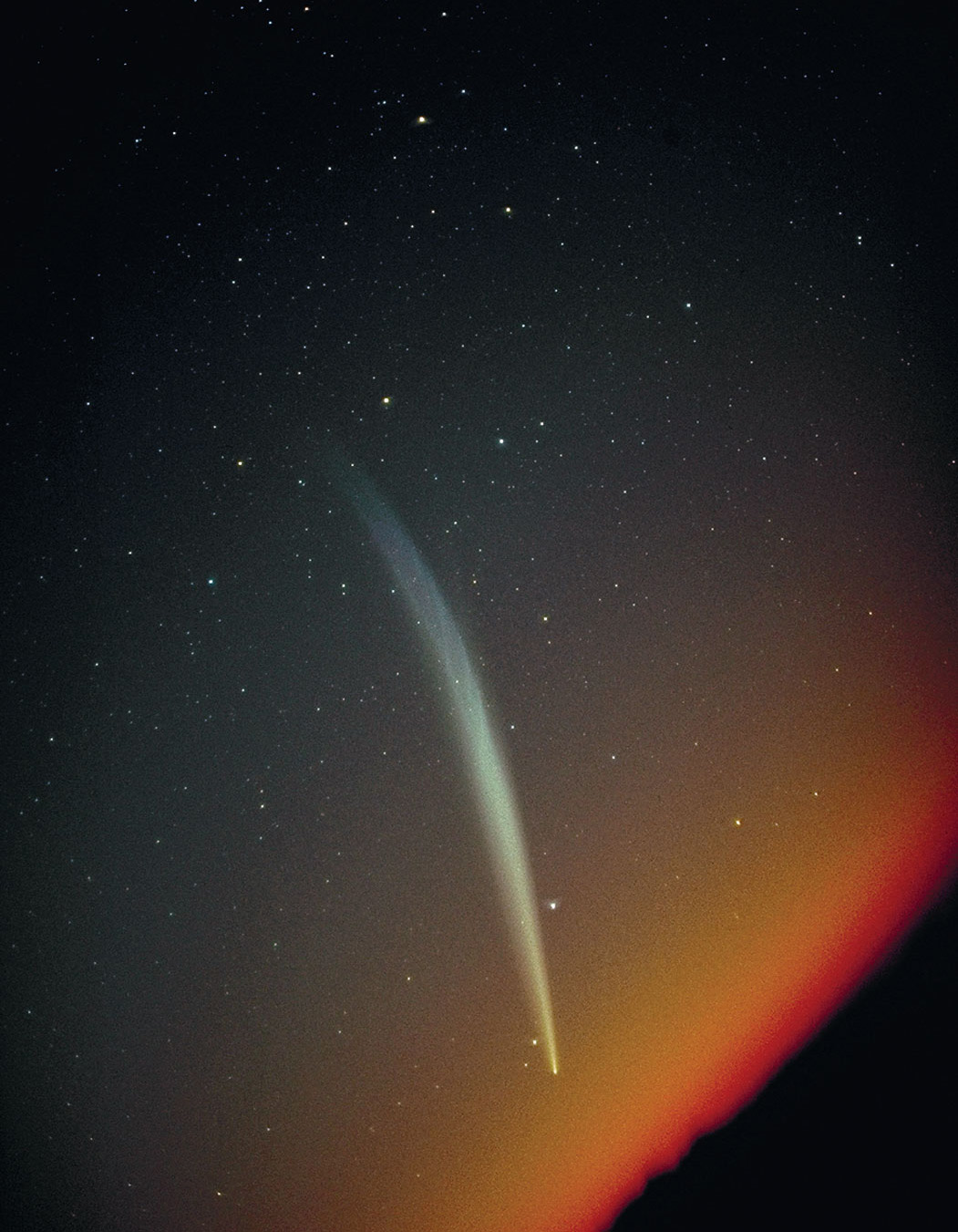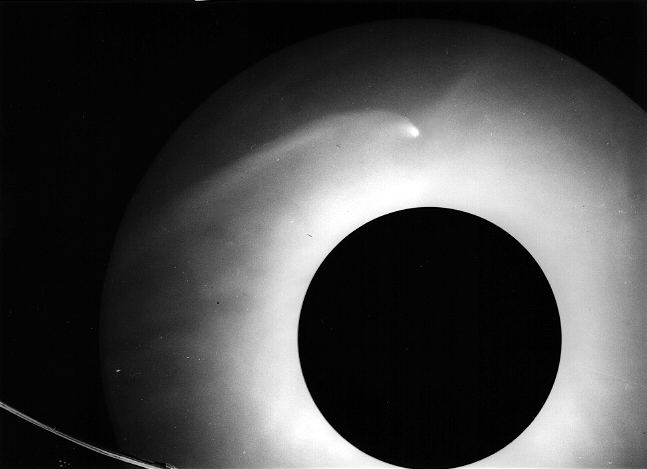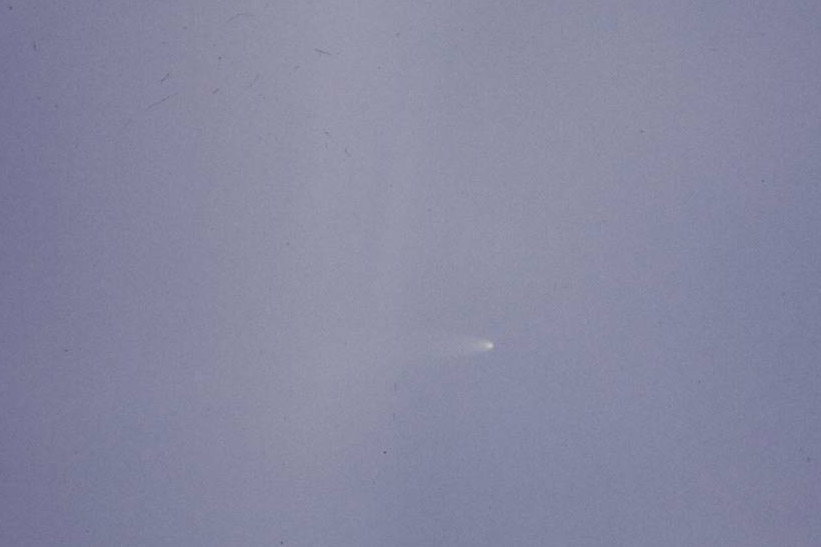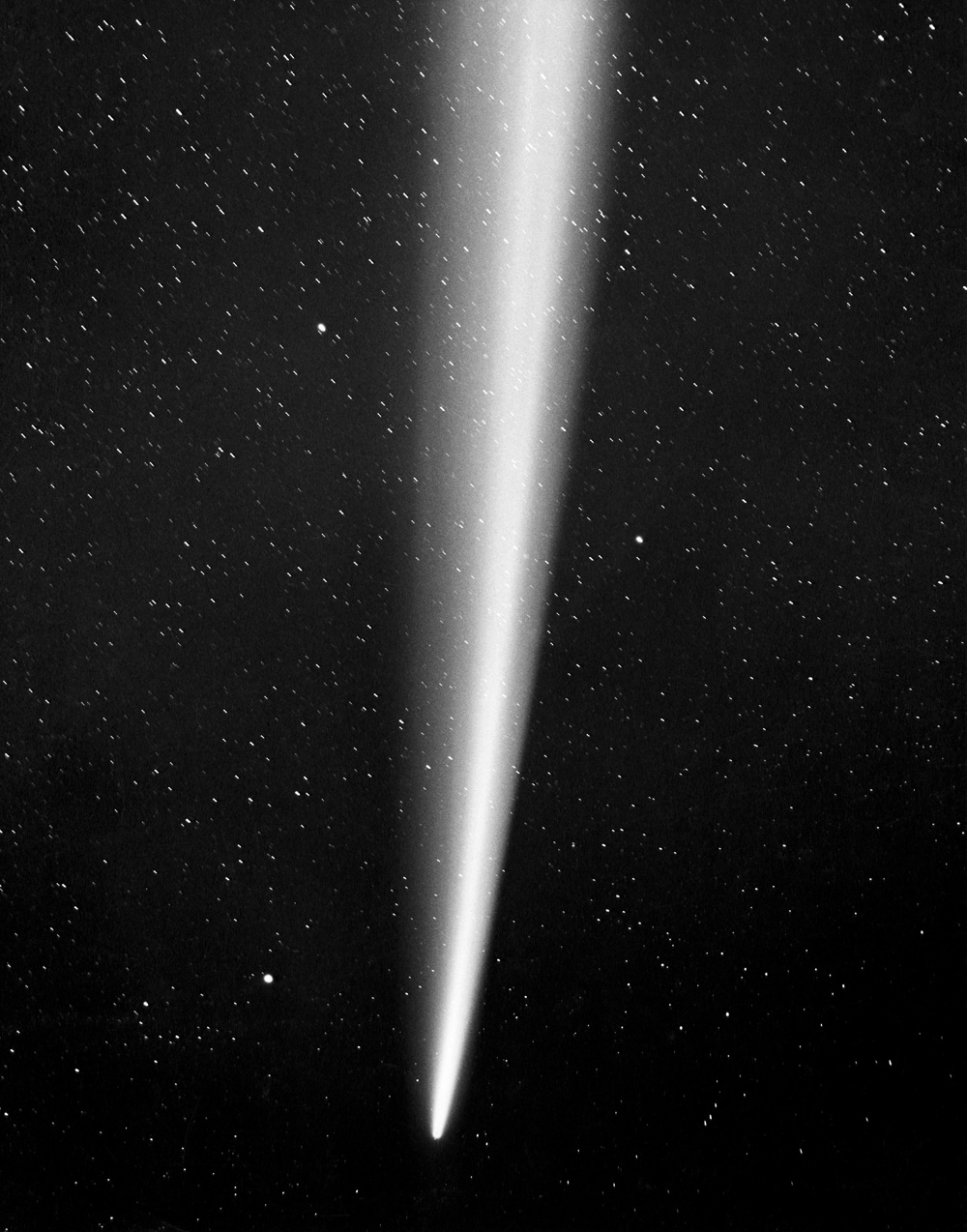
Perihelion: 1965 October 21.18, q = 0.008 AU
What would prove to be the 20th Century’s brightest comet was discovered on the morning of September 18, 1965 – in a sky recently swept clean by a typhoon – by two Japanese amateur astronomers, Kaoru Ikeya and Tsutomu Seki (both of whom were veteran comet discoverers), independently and within about 15 minutes of each other. The comet was an 8th-magnitude object at the time, and traveling eastward at approximately one degree per day; within a couple of weeks, it had brightened to 6th magnitude and had developed a short tail a couple of degrees long. By about this time orbital calculations were beginning to show that it was a Kreutz sungrazer, and furthermore would be appearing under just about the best viewing geometry possible for such an object, and thus hopes were high that it would put on a spectacular display.
Comet Ikeya-Seki brightened rapidly during October, being close to 4th magnitude around the 7th and as bright as 2nd magnitude, with a 10-degree-long tail, by mid-month. Observations became difficult thereafter as it slipped into morning twilight, but by the 18th observers in the southern hemisphere were reporting it to be as bright as magnitude 0 deep in the dawn sky, and it began to be visible telescopically during the day.

By October 20 the comet had brightened dramatically, and throughout the U.S. it was widely viewed as a naked-eye object during full daylight. Merely covering up the sun with an outstretched hand would allow the comet and up to two degrees of tail to be visible, and numerous brightness estimates at the time indicated that it was as bright as magnitude -10 or -11. It may have been even brighter when it passed through perihelion a few hours later; this took place after sunset from the U.S., but from Japan, it was easily visible in the noontime sky just a few arcminutes from the sun itself.
The comet was again a naked-eye daylight object on October 21, although it faded noticeably as the day progressed. Telescopically it was a daytime object for another day or two, but meanwhile, it was beginning to reappear back in the morning sky, and on the morning of the 25th it was reported as being as bright as magnitude -2 with a bright tail 20 degrees long. As it climbed higher each successive morning it faded, but at the same time the tail grew longer and more impressive, and at the end of the month it was reported as being about 30 degrees long or longer, bright, slender, and slightly curved.

By early November the comet had faded to 3rd or 4th magnitude, although it continued to exhibit its bright, long tail, which even late in the month was still being reported as being 15 degrees long as seen with the unaided eye. It dropped below naked-eye visibility by early December, and thereafter faded rapidly and grew vague and diffuse; it was only about 10th magnitude in early January 1966 and was little more than a hazy patch of light when the last photographs of it were taken shortly before mid-February.
Comet Ikeya-Seki ended up being the most scientifically studied comet up until the time of its appearance. Indeed, plans to obtain observations of it had been scheduled for NASA’s Gemini 6 mission which had been originally scheduled for launch on October 25, however, a failure of the planned Atlas-Agena rendezvous vehicle – the primary reason for the mission – caused the mission to be delayed for several weeks. Spectroscopic observations revealed the presence of numerous metallic atoms within the comet’s dust, and one interesting experiment carried out at Sacramento Peak Solar Observatory in New Mexico attempted to see if the sun’s corona was affected by the comet’s passage through it; no effects were detected. The comet’s appearance also brought the first attempts to obtain ultraviolet observations by means of sounding rocket launches, from Wallops Island in Virginia and White Sands Missile Range in New Mexico; only the White Sands flight was successful, although it didn’t produce much in the way of significant scientific results.

Japanese observers reported a pair of small apparent fragments of the comet’s primary nucleus as it rounded perihelion, but these were apparently short-lived objects that soon evaporated. However, in early November a secondary nucleus began to be detected within the inner coma, and over time its separation from the primary nucleus increased, eventually reaching almost a full arcminute by the beginning of January. Individual orbital calculations for the two nuclei indicate that the primary nucleus has an approximate orbital period of 880 years, while that of the secondary nucleus is in the neighborhood of 1110 years.
Comet Ikeya-Seki was the second – and brightest – of three Kreutz sungrazers that appeared during a seven-year period between 1963 and 1970, and as “Ice and Stone 2020” participants have undoubtedly noticed, several previous “Comets of the Week” have been Kreutz sungrazers. This most remarkable “family” of comets has produced some of the brightest comets in history and has been the subject of numerous scientific investigations, and it is the subject of this week’s “Special Topics” presentation.
More from Week 44:
This Week in History Special Topic Free PDF Download Glossary
Ice and Stone 2020 Home Page


